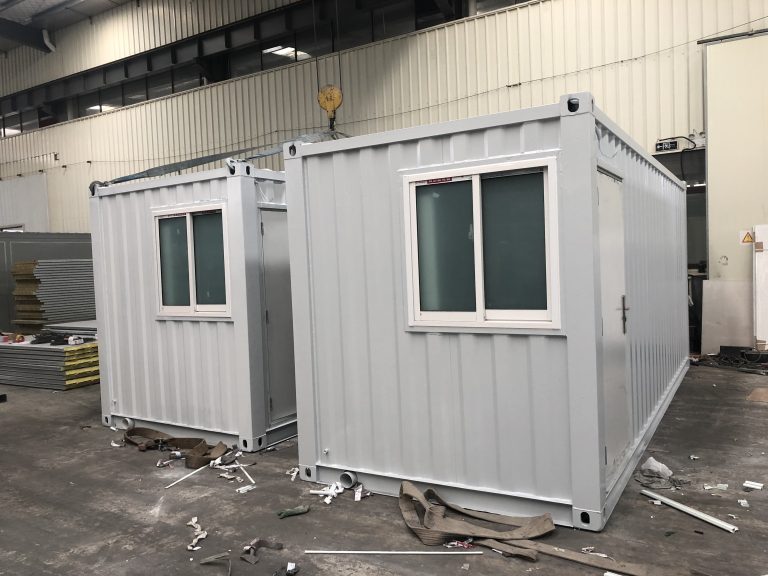Automation technology innovation of steel structure intelligent inspection and evaluation system
Inhoudsopgave
Benefits of Implementing Automation Technology in Steel Structure Inspection
Steel structures are a crucial component of many buildings and infrastructure projects, providing strength and stability to support various loads. However, ensuring the quality and integrity of these structures is essential to prevent potential safety hazards and costly repairs. Traditional methods of inspecting steel structures can be time-consuming, labor-intensive, and prone to human error. As a result, there has been a growing interest in the development of automation technology to streamline the inspection process and improve accuracy.
One of the key benefits of implementing automation technology in steel structure inspection is the increased efficiency and speed of the inspection process. Automation systems can perform inspections much faster than manual methods, allowing for quicker identification of potential issues and reducing downtime for maintenance and repairs. This can result in significant cost savings for companies and project owners, as well as improved safety for workers and the public.

In addition to speed and efficiency, automation technology also offers improved accuracy and consistency in the inspection process. Automated systems are programmed to follow specific inspection protocols and criteria, ensuring that all relevant areas of the structure are thoroughly examined. This can help to identify potential defects or weaknesses that may have been overlooked using manual methods, leading to more reliable and comprehensive inspection results.
Furthermore, automation technology can provide real-time data and analysis of the structural condition, allowing for immediate action to be taken if any issues are detected. This can help to prevent minor problems from escalating into major structural failures, reducing the risk of accidents and ensuring the long-term integrity of the steel structure. By implementing automation technology, companies can proactively address maintenance needs and make informed decisions about the repair and replacement of structural components.
Another benefit of automation technology in steel structure inspection is the ability to collect and store large amounts of data for future analysis and evaluation. Automated systems can generate detailed reports and documentation of the inspection findings, providing a valuable resource for engineers, designers, and project managers. This data can be used to track the condition of the structure over time, identify trends or patterns in structural degradation, and inform future maintenance and repair strategies.
Overall, the implementation of automation technology in steel structure inspection offers numerous benefits, including increased efficiency, accuracy, and safety. By leveraging the capabilities of automation systems, companies can streamline the inspection process, improve the quality of inspection results, and make more informed decisions about the maintenance and repair of steel structures. As technology continues to advance, the potential for innovation in steel structure inspection and evaluation systems is vast, offering exciting opportunities for the construction industry to enhance the safety and reliability of steel structures for years to come.
How Automation Technology Improves Efficiency and Accuracy in Steel Structure Evaluation
Steel structures are a critical component of many buildings and infrastructure projects, providing strength and stability to support various loads. However, ensuring the quality and integrity of these structures is essential to prevent potential safety hazards and costly repairs. In recent years, automation technology has revolutionized the way steel structures are inspected and evaluated, leading to increased efficiency and accuracy in the process.
One of the key innovations in steel structure inspection and evaluation is the development of intelligent systems that utilize automation technology. These systems are equipped with advanced sensors and imaging technology that can detect defects, corrosion, and other structural issues with precision and speed. By automating the inspection process, these systems can significantly reduce the time and resources required for manual inspections, while also improving the accuracy and reliability of the results.
Automation technology has also enabled the integration of data analytics and machine learning algorithms into steel structure evaluation systems. These algorithms can analyze large volumes of data collected from sensors and imaging devices to identify patterns and trends that may indicate potential structural problems. By leveraging the power of artificial intelligence, these systems can provide more insightful and predictive assessments of the structural health of steel components, allowing for proactive maintenance and repair strategies to be implemented.
Furthermore, automation technology has facilitated the development of remote monitoring and inspection capabilities for steel structures. With the use of drones and other unmanned aerial vehicles equipped with high-resolution cameras and sensors, inspectors can now access hard-to-reach areas of steel structures without the need for scaffolding or other costly access equipment. This not only improves the safety of inspectors but also allows for more frequent and thorough inspections to be conducted, leading to early detection of potential issues and timely intervention.
In addition to improving the efficiency and accuracy of steel structure evaluation, automation technology has also enhanced the overall quality control and assurance processes in the construction industry. By automating the inspection and evaluation of steel structures, construction companies can ensure that their projects meet the highest standards of safety and quality, reducing the risk of structural failures and costly rework. This not only benefits the construction industry but also enhances the safety and reliability of the built environment for the general public.
Overall, automation technology has revolutionized the way steel structures are inspected and evaluated, leading to increased efficiency, accuracy, and safety in the process. By leveraging advanced sensors, imaging technology, data analytics, and machine learning algorithms, intelligent inspection systems can provide more insightful and predictive assessments of structural health, enabling proactive maintenance and repair strategies to be implemented. With the development of remote monitoring capabilities, inspectors can now access hard-to-reach areas of steel structures more easily and conduct more frequent and thorough inspections. As a result, automation technology has not only improved the quality control and assurance processes in the construction industry but also enhanced the safety and reliability of steel structures for the benefit of all stakeholders.






